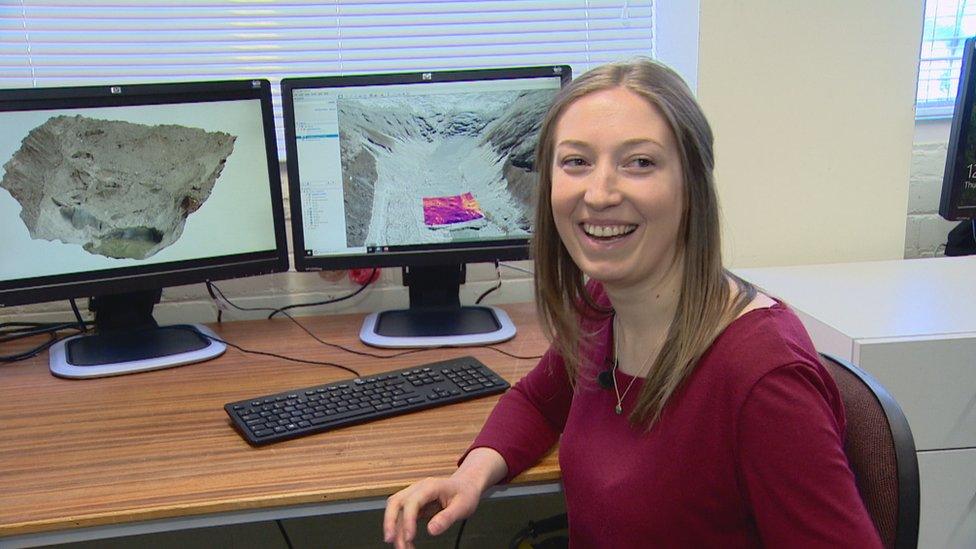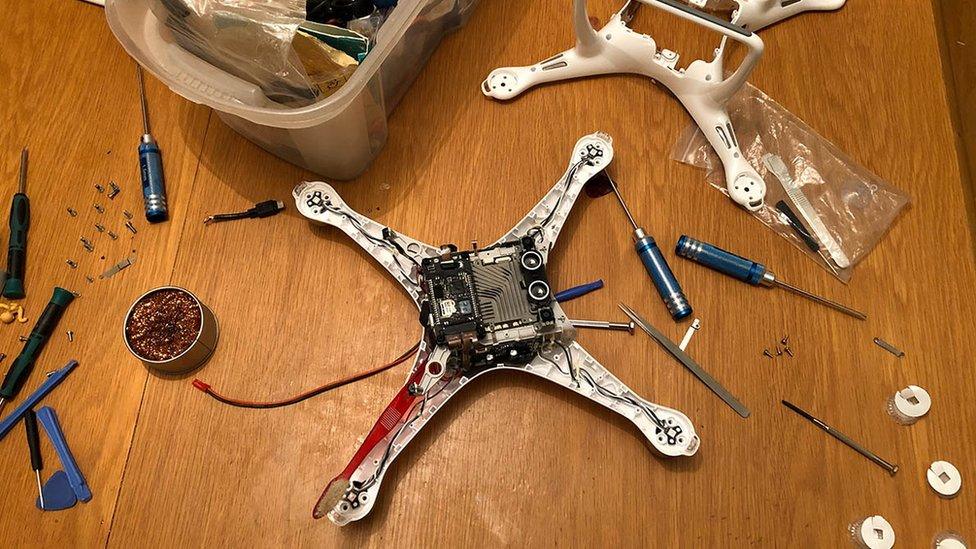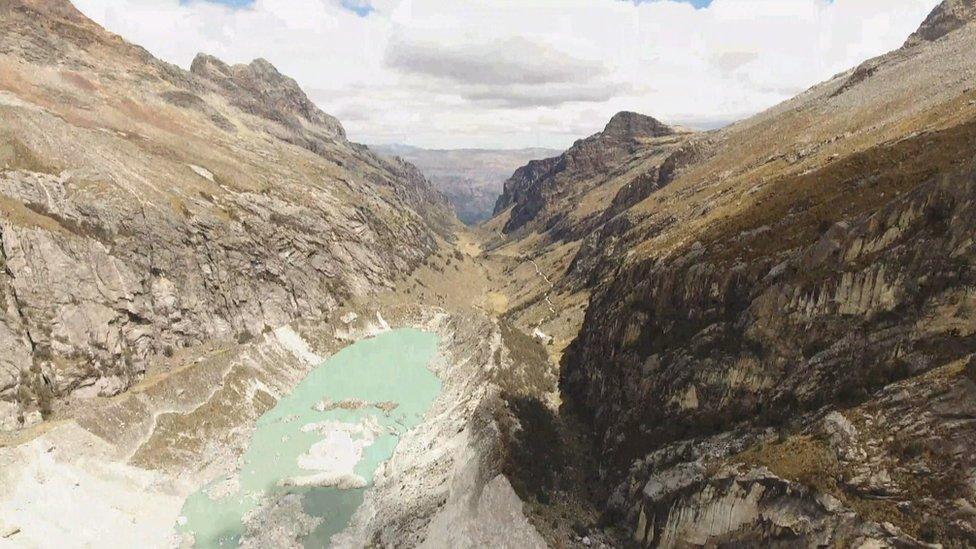Edinburgh University researchers use drones to map retreating Andes glaciers
- Published

Rosie Bisset used specially-adapted drones to study the glaciers in the Andes
An Edinburgh university researcher has used drones to capture a bird's-eye view of some of the highest glaciers in South America.
Rosie Bisset is part of a project to map the Andes glaciers which are retreating in the face of global heating, despite their high altitude.
Experts say these glaciers are a vital resource which are under threat.
The glaciers in Peru have shrunk by about 30% in the last couple of decades.
Peter Nienow, professor of geology at the University of Edinburgh, said it could have a devastating effect on local people.
"In the Andes in Peru, which have about 70% of the world's glacier area in the tropics, those glacial areas are retreating," he said.
"As they retreat that impacts downstream communities because they rely on the water resources for agriculture, for industry, for hydroelectric power."
'Major obstacle'
Doctoral student Rosie Bisset knew this before she trekked high into the Andes with her drones.
She wanted to know more about both the extent of the retreat and exactly how glaciers melt.
The altitude of 4,600m (15,000 ft) presented a major obstacle.
"At that altitude the air is really thin, making it difficult to operate many drones," she said.
"So we collaborated with a local company called Skytech Aerial to help us build a drone that would cope with the high altitude but also have the sensors we needed."

Rosie Bisset is using her data to map how the structure and size of the glacier is changing
Skytech Aerial's owner David Redpath customised two commercially available drones and taught Rosie to fly them in a matter of weeks.
He says propellers need to spin faster in thinner air to create lift, running down the battery faster. On the plus side cold air is denser, making it easier to create lift.
"We were able to merge ideas and customise one of the drones," David says.
"What Rosie specifically was looking for was a drone with a thermal camera underneath that would be able to do the thermal imaging of the glacier."
Rosie and her field assistant Callum Reay climbed two glaciers, each carrying a drone in their rucksack.
They spent some nights under canvas in sub-zero temperatures to capture images in both visible and infrared light.

The drone was fitted with a thermal imaging camera and had to be able to withstand high altitudes.
Back in the relative warmth of Edinburgh, Rosie is building a 3D digital model of the Llaca glacier.
"We can compare this to 3D models that were collected in previous years in order to tell us how the glacier's structure and size is changing."
On to the model she pieces a mosaic of the data gathered by the infrared camera.
"Using the thermal imagery we can generate a map of surface temperature on the glacier.
"This will tell us more about the properties of the surface and how it's influencing the melt rates of the glaciers."

Rosie can use the thermal imagery to generate a map of the surface temperature of the glacier
Rosie worked with Edinburgh University's Airborne Geosciences Facility. It has a fleet of aerial vehicles that can be used for research abroad and here at home.
The projects range from precision agriculture to hunting dinosaur footprints in the Highlands and Islands.
It is run by professional pilot Thomas Wade, who says these eyes in the sky offer a powerful advantage over satellites:
"We're talking about very high resolution imagery, sub-millimetre resolution in some cases, which you just can't do with satellites at the moment."
Dr Andrew Gray works in Edinburgh for the National Centre for Earth Observation, a research centre spread across several UK universities.
He and his colleagues provide equipment enabling researchers to "ground truth" their data.
"We host different types of sensors - multispectral cameras," he said. "They're sort of like normal cameras but they can see further into the electromagnetic spectrum. They're very precisely calibrated as well.
"They have any number of applications, things like looking at different types of vegetation, biodiversity, studying biomass or different ecosystems.
"For example you could map forests and things like rhododendron encroachment."

Peru's glaciers have shrunk by about 30% over the last 20 years
Rosie Bisset is still working on her findings for inclusion in her PhD thesis. Her research is primarily funded by the Natural Environmental Research Council (NERC) with additional support from the Scottish Alliance for Geoscience, Environment and Society.
Her work is also funded through a collaborative research programme between NERC and the Peruvian Council for Science, Technology and Technological Innovation.
The project, called CASCADA, partners Peruvian experts in water resources, glaciology and ecology with UK glaciologists, geochemists and technologists to investigate and come up with solutions to the impact of retreating glaciers on Peru's rivers.